VR Wars: Ampere’s RTX 3080 vs. the RTX 3090 – Enhanced Performance benchmarked Using FCAT-VR & the Vive Pro
This review is a follow-up to the RTX 3080 versus the RTX 2080 Ti VR performance review. We now present a thirteen-game VR performance showdown between the RTX 3080 and the RTX 3090 using even more demanding enhanced settings using the Vive Pro and FCAT VR.
Since we posted our original review, we have benchmarked up to 20 VR games for our follow-up reviews over the past three years. We have also compared FCAT-VR with our own video benchmarks using a camera to capture images directly from our HMD’s lenses. For BTR’s VR testing methodology, please refer to this evaluation.
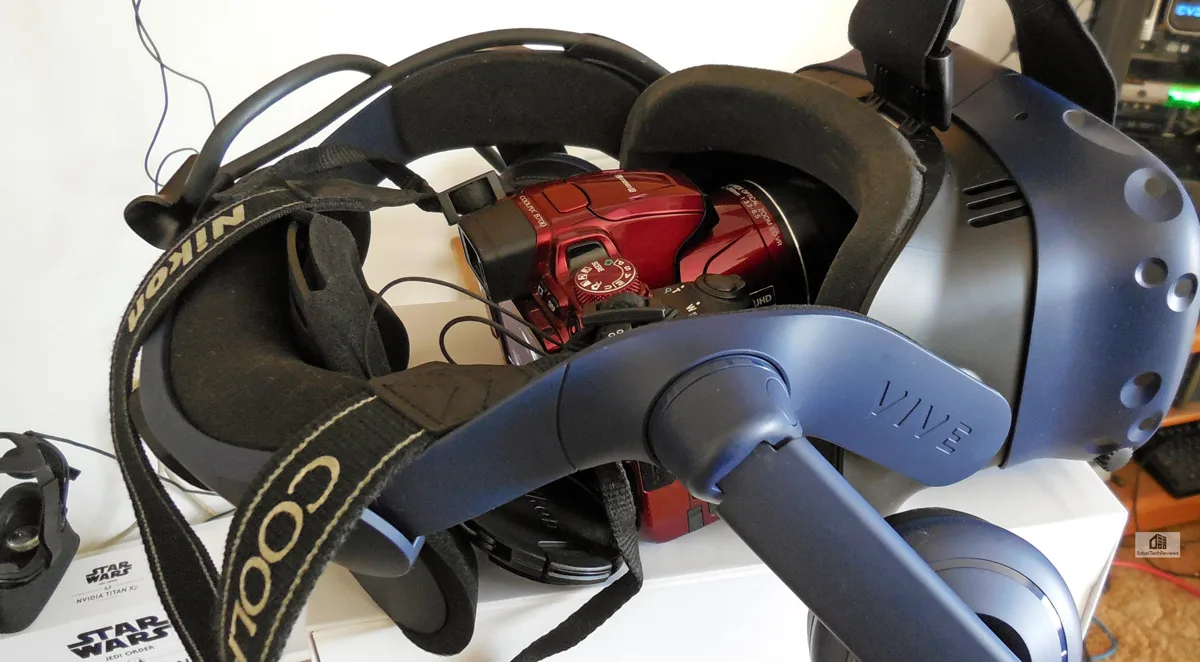
We currently benchmark thirteen VR games using the Vive Pro. BTR’s testing platform is an overclocked Intel Core i9-10900K, an EVGA Z490 FTW motherboard, and 32 GB of Vulcan Dark Z DDR4 at 3600MHz on Windows 10 64-bit Pro Edition using NVIDIA’s latest GeForce Driver, hotfix 456.71.
It is important to be aware of VR performance since poorly delivered frames can make a VR experience unpleasant. It’s also important to understand how we accurately benchmark VR games using FCAT-VR as explained here. But before we benchmark our thirteen VR games, check out our Test Configuration below.
Test Configuration – Hardware
- Intel Core i9-10900K (HyperThreading/Turbo boost On; All cores overclocked to 5.1GHz/5.0Ghz. Comet Lake DX11 CPU graphics)
- EVGA Z490 FTW motherboard (Intel Z490 chipset, v1.3 BIOS, PCIe 3.0/3.1/3.2 specification, CrossFire/SLI 8x+8x), supplied by EVGA
- T-FORCE DARK Z 32GB DDR4 (2x16GB, dual channel at 3600MHz), supplied by Team Group
- Vive Pro, on loan from HTC/Vive; the Wireless Adapter is not used for benchmarking
- RTX 3080 Founders Edition 10GB, stock clocks, on loan from NVIDIA
- RTX 3090 Founders Edition 24GB, stock clocks, on loan from NVIDIA
- 1TB Team Group MP33 NVMe2 PCIe SSD for C: drive
- 1.92TB San Disk enterprise class SATA III SSD (storage)
- 2TB Micron 1100 SATA III SSD (storage)
- 1TB Team Group GX2 SATA III SSD (storage)
- 500GB T-FORCE Vulcan SSD (storage), supplied by Team Group
- ANTEC HCG1000 Extreme, 1000W gold power supply unit
- BenQ EW3270U 32? 4K HDR 60Hz FreeSync monitor
- Samsung G7 Odyssey (LC27G75TQSNXZA) 27? 2560×1440/240Hz/1ms/G-SYNC/HDR600 monitor
- DEEPCOOL Castle 360EX AIO 360mm liquid CPU cooler
- Phanteks Eclipse P400 ATX mid-tower (plus 1 Noctua 140mm fan)
Test Configuration – Software
- GeForce 456.71 hotfix drivers
- High Quality, prefer maximum performance, single display, as set in the NVIDIA control panel
- Windows 10 64-bit Pro edition; latest updates v2004.
- Latest DirectX
- MSI’s Afterburner, 4.6.3 beta to set both cards’ power and temperature limits to their maximums
- All 13 VR games are patched to their latest versions at time of publication
- FCAT-VR Capture (latest Beta 03/04/20)
- FCAT-VR Beta 18
- SteamVR – at 100% resolution unless specified*
*Be aware that SteamVR may set the default resolution to other than 100%, depending on the video card it detects. It set the RTX 3090’s resolution to 150% although it left the RTX 3080’s resolution at 100%.
13 VR Game benchmark suite & 4 synthetic tests
Synthetic
- VRMark Cyan Room
- VRMark Blue Room
- Unigine Superposition VR Benchmark
- OpenVR Benchmark
SteamVR /Epic Platform Games
- ARK: Park
- Boneworks
- Elite Dangerous
- Fallout 4
- Half Life: Alyx
- Hellblade: Senua’s Sacrifice
- No Man’s Sky
- Obduction
- Project CARS 2
- Skyrim
- Subnautica
- The Vanishing of Ethan Carter
- The Walking Dead: Saints & Sinners
The Unreal 4 engine is a very popular engine for VR development, and five of our thirteen test games are created with it. The Creation and Unity engines are each used for two games, while the COBRA, No Man’s Sky, Source, and Madness engines are each represented by one game.
It is important to remember that BTR’s charts use frametimes in ms where lower is better, but we also compare “unconstrained framerates” which shows what a video card could deliver (headroom) if it wasn’t locked to either 90 FPS or to 45 FPS by the HMD. In the case of unconstrained FPS which measures just one important performance metric, faster is better.
Let’s individually look at our thirteen VR games’ performance using FCAT VR. All of our games were benchmarked at 100% SteamVR resolution or higher, although some games were also set in-game to a higher resolution or increased pixel density as described for each game, as we compare the RTX 3080 with the RTX 3090.
First up, ARK Park.
ARK Park
ARK Park is a single or multiplayer VR adventure game set in a dinosaur theme park, and it allows gamers to interact with a few of the dinosaurs in ARK: Survival Evolved. The idea is to explore your own “Jurassic Park” with opportunities to study genetics, raise baby dinosaurs from eggs, ride and paint them, and even defend the park against attacking dinosaurs in a wave shooter segment. It’s not a great game with small maps, but its visuals are still rather impressive.
ARK: Park has very few adjustable settings so we benchmark it using its highest preset setting. We also used SteamVR to increase the resolution from 100% to 200%.
Here are the performance results of our two competing cards using FCAT VR’s generated chart.
Here are the details are reported by FCAT-VR:
The RTX 3080 delivered 274.60 unconstrained FPS with 3 dropped frames and 3 frames were synthesized. In addition, it suffered 3 Warp Misses.
The RTX 3090 achieved 299.46 unconstrained FPS with 4 dropped and 3 synthetic frames together with 4 warp misses, but there may be an engine framerate cap involved. There isn’t any difference playing on either card at our chosen settings as ARK Park is built on the Unreal Engine, and it is just not that demanding. We would not recommending increasing the Super Resolution in SteamVR’s settings any further since there is a point of diminishing visual returns beyond 150%.
Next, we look at Boneworks.
Boneworks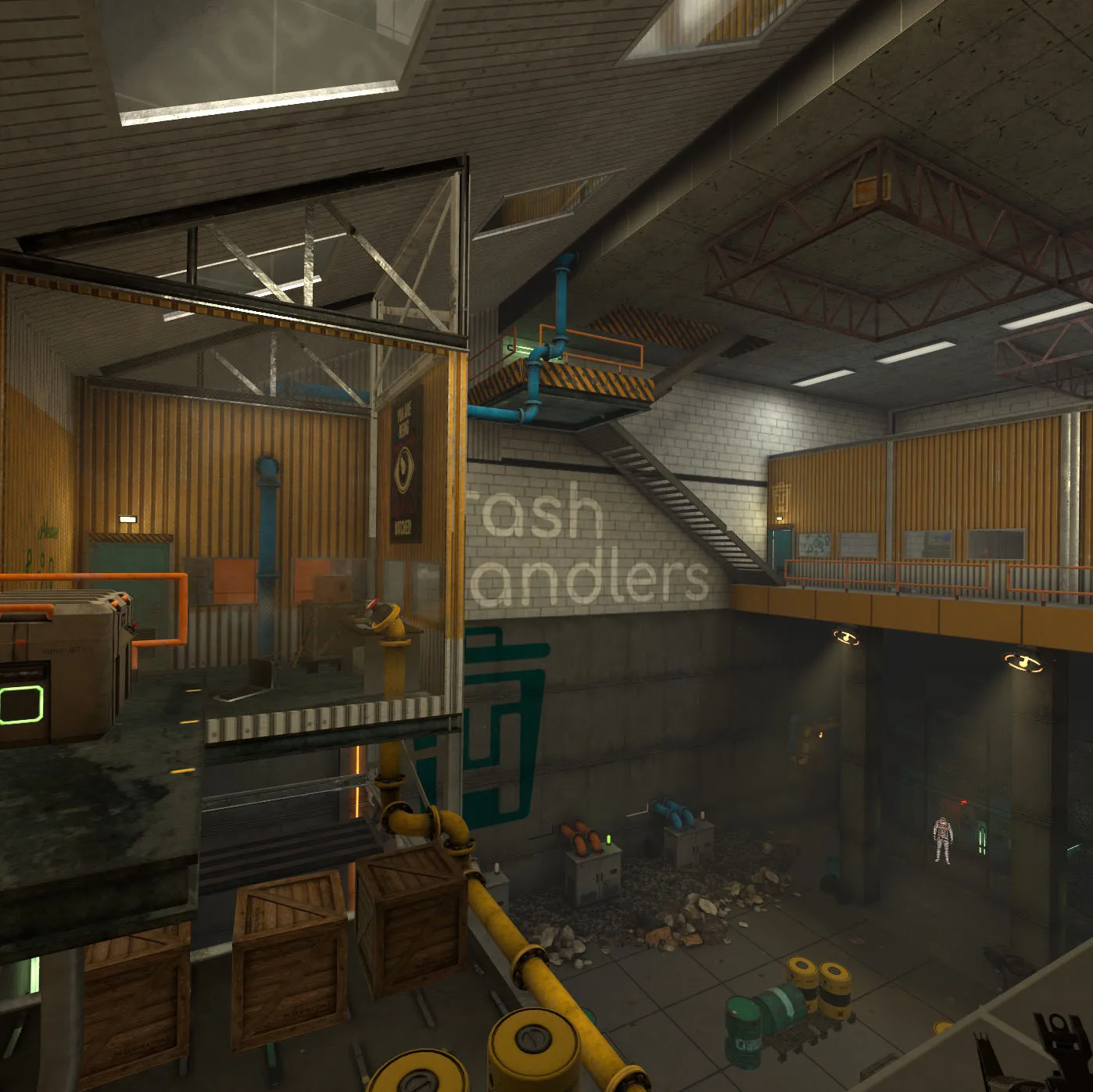
Boneworks is a rare game that couples a fair single player campaign with an incredible sandbox and next generation VR physics interactive tour de force. We benchmark using the Time Tower level.
Boneworks made on the Unity engine has average to very good visuals and it particularly benefits by allowing for high levels of MSAA up to 8X which we use for benching. We also enable ambient occlusion and use the highest settings, and in addition, we set SteamVR’s resolution to 150%
Here are the frametimes.
Here are the details are reported by FCAT-VR:
The RTX 3080 delivered 146.32 unconstrained FPS with 1 dropped and 1 synthetic frame. There was also a warp miss.
The RTX 3090 delivered 176.23 unconstrained FPS also with 1 dropped and 1 synthetic frames along with a warp miss. As with ARK Park, there isn’t any difference playing on either card at our chosen settings as the game is not very demanding and we would also recommend also using NVIDIA’s VRSS for maximum visual improvement.
Let’s check out Elite Dangerous next.
Elite Dangerous
Elite Dangerous is a popular space sim built using the COBRA engine. It is hard to find a repeatable benchmark outside of the training missions.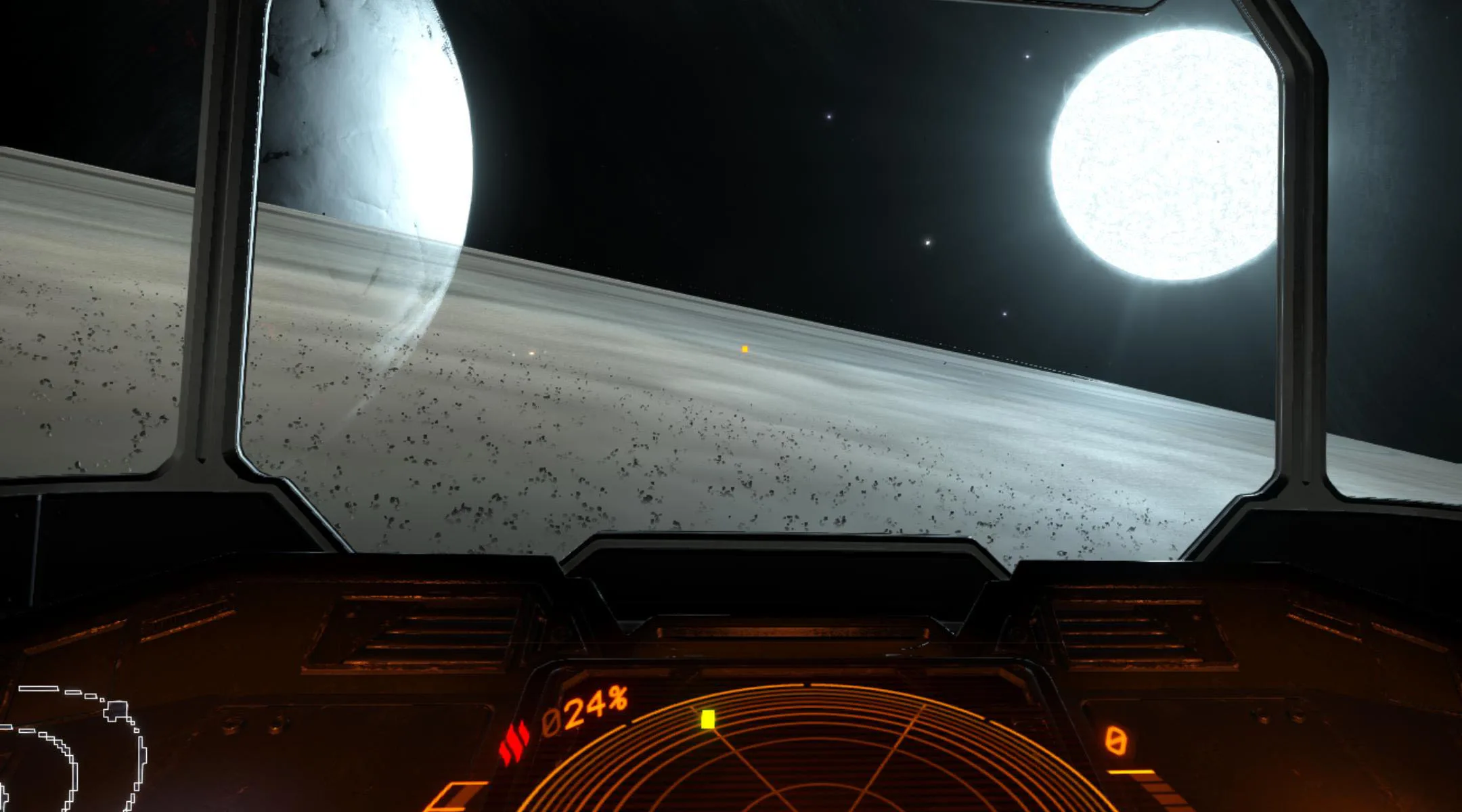
A player will probably spend a lot of time piloting his space cruiser while completing a multitude of tasks as well as visiting space stations and orbiting a multitude of different planets (~400 billion). Elite Dangerous is also co-op and multiplayer with a very dedicated following of players.
We picked the Ultra Preset, and this time, we set the Field of View to its maximum. Here are the frametimes.
Here are the details are reported by FCAT-VR:
The RTX 3080 delivered 132.42 unconstrained FPS with 4 Warp Misses and 4 dropped frames, and 4 of its frames had to be synthesized.
The RTX 3090 delivered 156.44 unconstrained FPS with 4 Warp Miss and 4 dropped frames, and it also required 5 synthetic frames. The experience playing Elite Dangerous at Ultra settings is no different on the RTX 3080 than it is playing on the RTX 3090. Perhaps the RTX 3090 may benefit more by increasing the resolution.
Let’s continue with Fallout 4.
Fallout 4
Fallout 4 uses the Creation Engine, and Bethesda has dropped all support for it so it remains unoptimized although there are mods that may be helpful. It’s pretty hard to use the Index controllers with it, so we use the Vive wands instead for this game. We benchmark at its highest settings and with TAA. All Fade settings are set to their maximums.
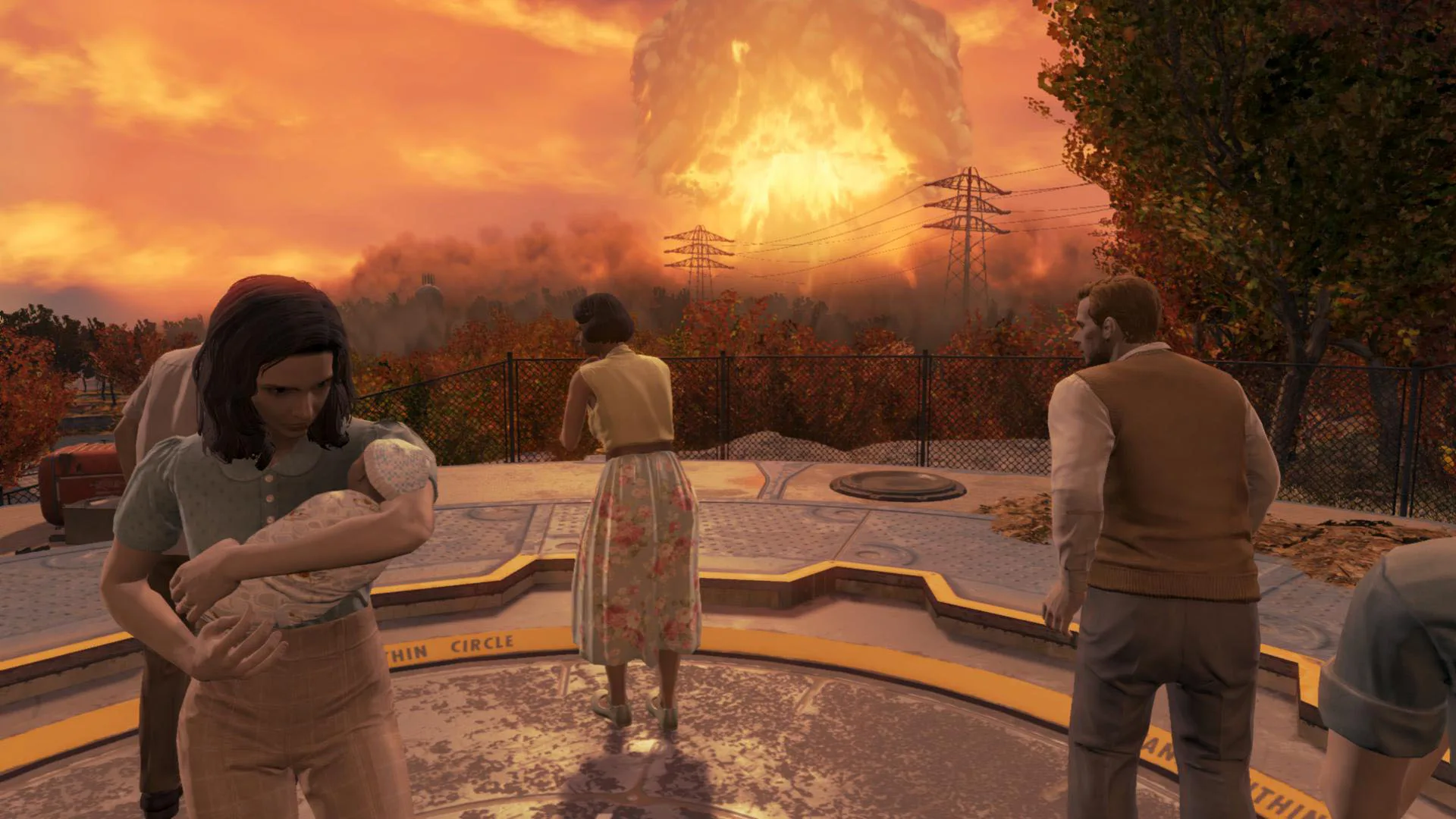 Fallout 4 had some issues on both cards as it is still an unoptimized mess abandoned by its publisher – but it is playable and an amazing full-game experience. Here is the frametime plot for Fallout 4.
Fallout 4 had some issues on both cards as it is still an unoptimized mess abandoned by its publisher – but it is playable and an amazing full-game experience. Here is the frametime plot for Fallout 4.
Here are the details are reported by FCAT-VR:
The RTX 3080 delivered 154.78 unconstrained FPS with 2 Warp Misses and 2 dropped frames, but 3% (200) of its frames had to be synthesized.
The RTX 3090 delivered 166.69 unconstrained FPS with 5 Warp Misses and 5 dropped frames, and it required 45 (1%) synthetic frames.
Next we look at Half Life: Alyx:
Half Life: Alyx
Half Life: Alyx uses an adaptive/dynamic scaling algorithm which uses a card’s performance headroom to subsample in demanding scenes and to supersample in less demanding scenes. We used its console commands to lock the SteamVR resolution to 150% so that it did not supersample or subsample.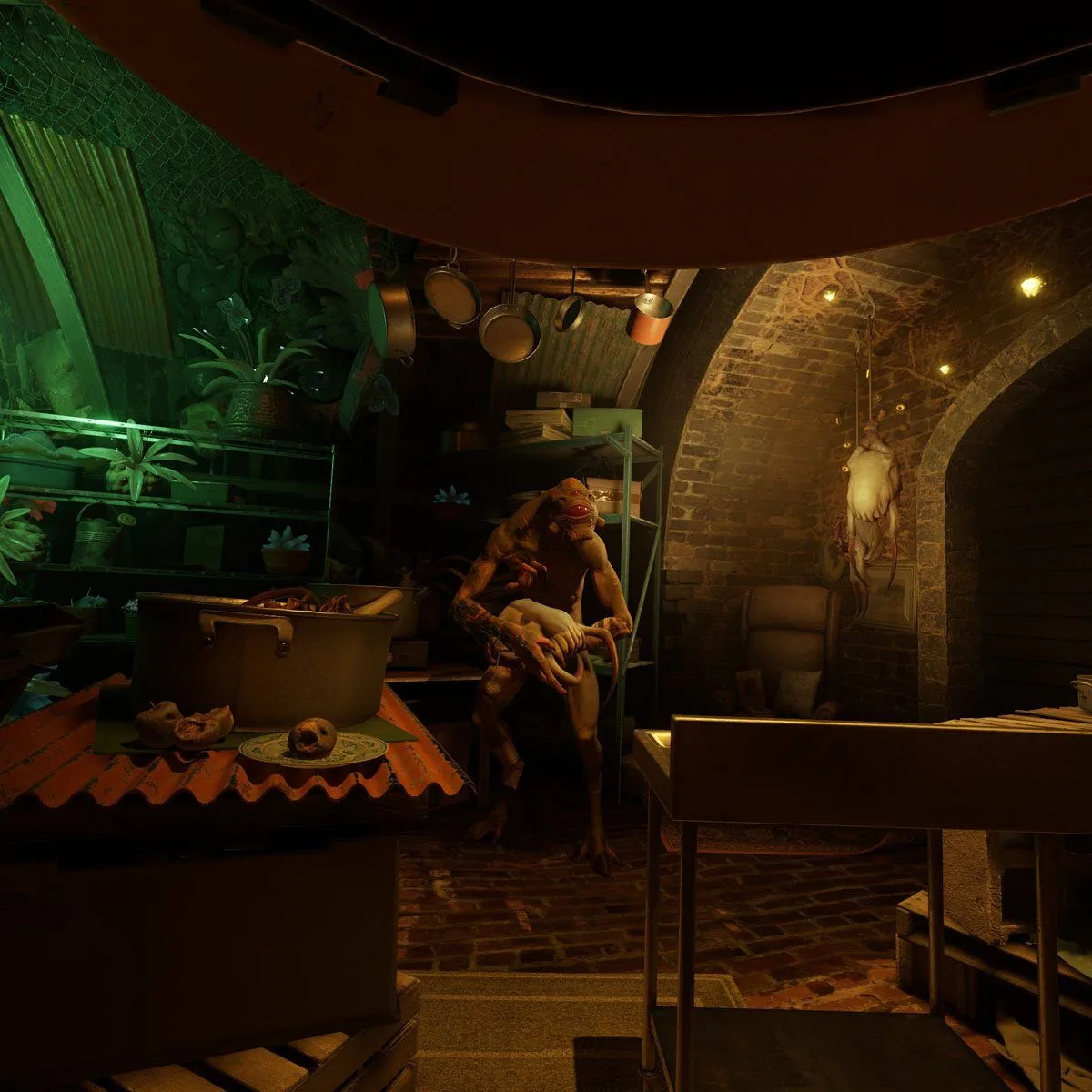
Here is the frametime plot for Half Life Alyx.
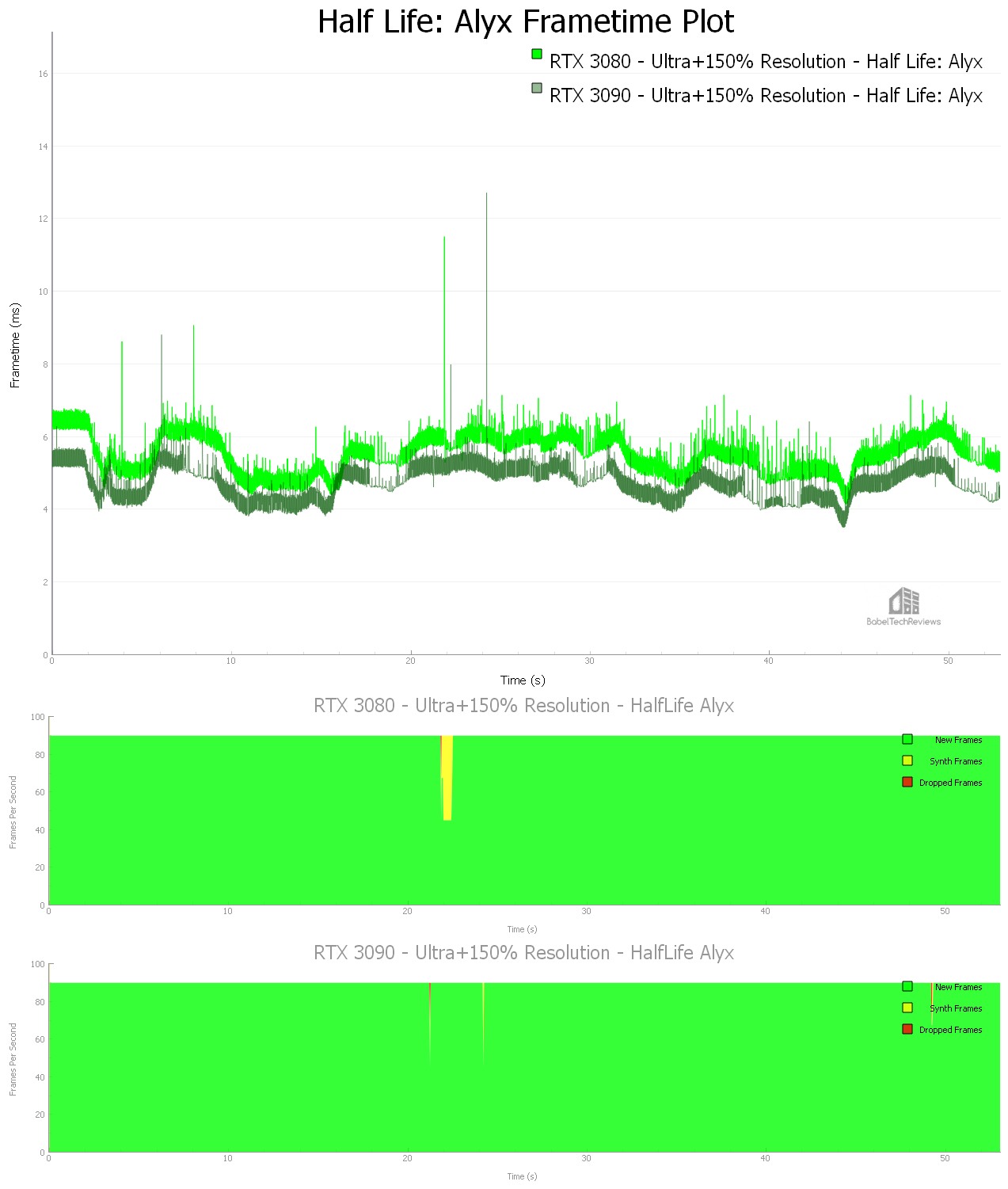 Here are the details as reported by FCAT-VR.
Here are the details as reported by FCAT-VR.
The RTX 3080 delivered 181.97 unconstrained FPS with 1 dropped and 24 synthetic frames. It had 1 warp miss.
The RTX 3090 delivered 212.65 unconstrained FPS and with 2 dropped and 4 synthetic frames with 2 warp misses. Half Life Alyx isn’t particularly demanding and there isn’t any difference playing on either card at our chosen settings. A player may consider increasing the Super Resolution to beyond 150% in SteamVR settings, and let the game subsample or supersample further.
Next, we look at Hellblade: Senua’s Sacrifice.
 Hellblade: Senua’s Sacrifice
Hellblade: Senua’s Sacrifice
Hellblade: Senua’s Sacrifice is a visually impressive game using the Unreal 4 engine. It is a dark and disturbing game that is far more intense in VR than playing the pancake version. We benchmark at its very highest settings and with TAA, and we also increased the resolution to 160% in-game from 130% in our earlier review. We suspect in that review, the settings were not properly applied.
Here is the frametime plot for Hellblade: Senua’s Sacrifice.
Here are the FCAT-VR details.
The RTX 3080 delivered 163.22 unconstrained FPS with 2 dropped and 9 synthetic frames along with 2 Warp Misses.
The RTX 3090 delivered 184.14 unconstrained FPS with 2 dropped and 8 synthetic frames. It also suffered 2 Warp Misses.
Hellblade isn’t particularly demanding even when the in-game resolution is set to 160% although it looks great.
Next, we will check out another demanding VR game, No Man’s Sky.
No Man’s Sky
No Man’s Sky is an action-adventure survival single and multiplayer game that emphasizes survival, exploration, fighting, and trading. It is set in a procedurally generated deterministic open universe, which includes over 18 quintillion unique planets using its own custom game engine.
The player takes the role of a Traveller in an uncharted universe by starting on a random planet with a damaged spacecraft equipped with only a jetpack-equipped exosuit and a versatile multi-tool that can also be used for defense. The player is encouraged to find resources to repair his spacecraft allowing for intra- and inter-planetary travel, and to interact with other players.
Here is the No Man’s Sky Frametime plot. We set the settings to “Ultra” which is above Enhanced and set the anisotropic filtering to 16x, and we also upgraded from FXAA to FXAA+TAA.
Here are the FCAT-VR details of our comparative runs.
The RTX 3080 delivered 113.61 unconstrained FPS with 3 warp misses and 3 dropped frames, and 9% (549) of its frames had to be synthesized.
The RTX 3090 delivered 130.68 unconstrained FPS with no dropped frames and no warp misses, and it only required 38 (1%) synthetic frames.
Next, we will check out another VR game, Obduction.
Obduction
Obduction is considered to be the spiritual successor to Myst and Riven. It is an adventure game developed by Cyan Worlds using the Unreal 4 engine and it has very good visuals. There is an emphasis on puzzle solving which get more and more difficult as a player progresses.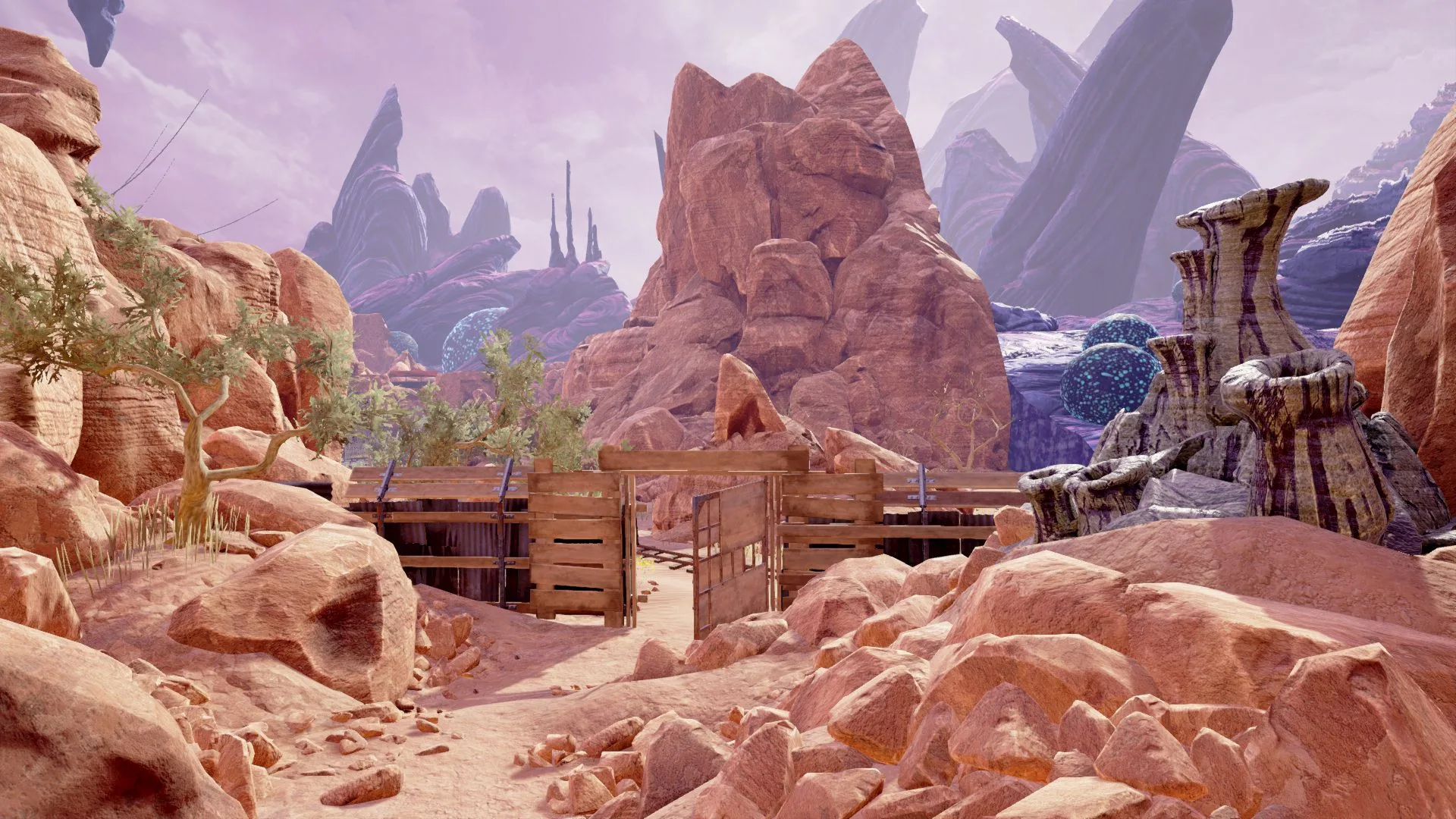
Here is Obduction’s frametime plot.
Here are the details.
The RTX 3080 delivered 131.54 unconstrained FPS with 2 dropped frames, 13 synthetic frames, and two warp misses.
The RTX 309 0 delivered 151.12 unconstrained FPS and with 3 dropped frames, 11 synthetic frames and 3 warp misses. The experience playing Obduction is very similar on both cards as the games is probably still not well-optimized.
Next we will check out another demanding VR game, Project CARS 2 that we like better than Project CARS 3.
Project CARS 2
There is no way to convey the sense of immersion that comes from playing Project CARS 2 in VR using a wheel and pedals. It uses its in-house Madness engine, and the physics implementation is outstanding. We are disappointed with Project CARS 3, and will continue to use the older game instead for VR benching for now.
Project CARS 2 offers many performance options and settings and we prefer playing with SMAA Ultra.
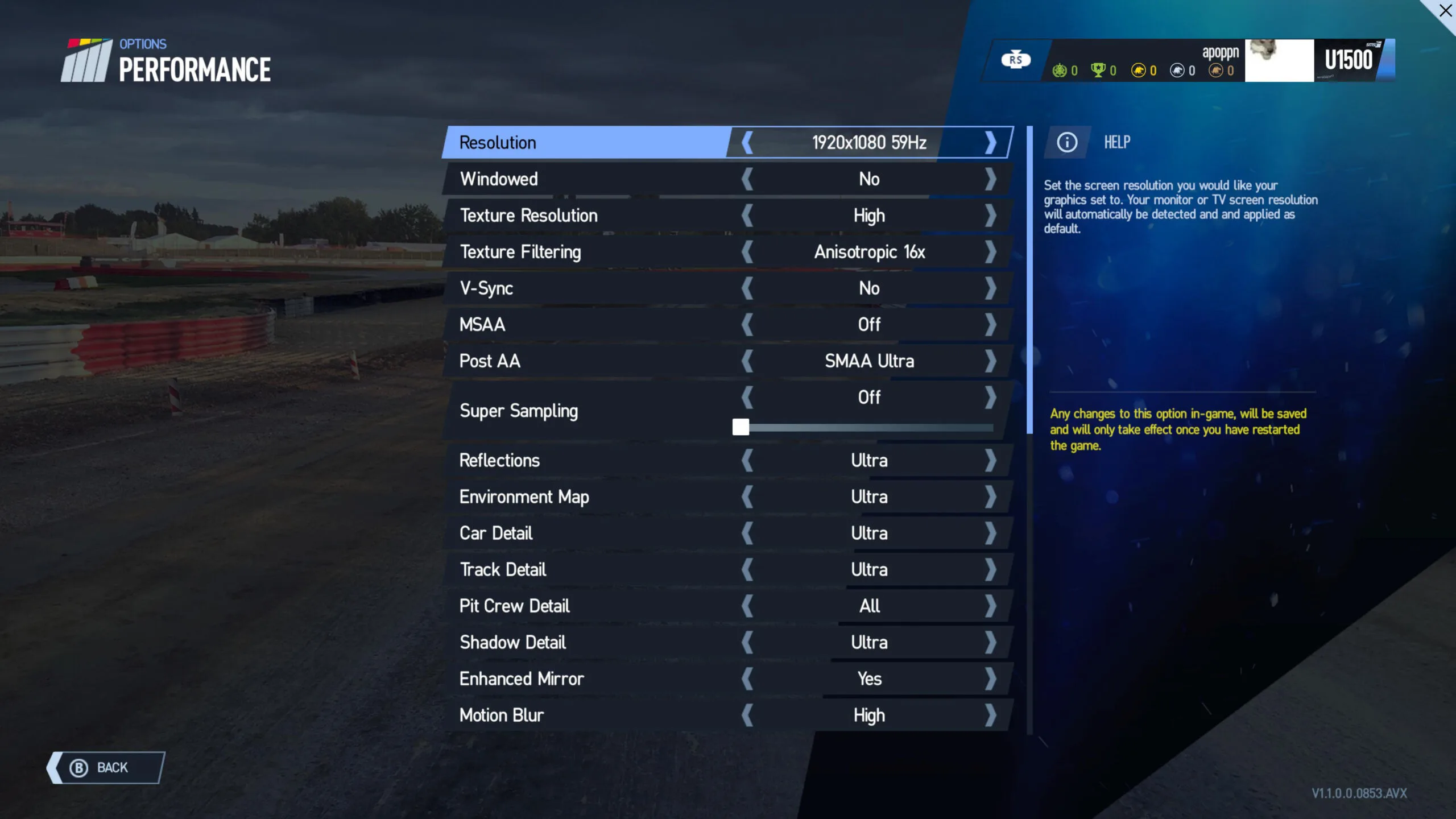
We used maximum settings including for Motion Blur although it looks best to us with on Low or Medium. For lesser cards, we would also recommend lowering grass and reflections to maximize framerate delivery if necessary as motion smoothing or reprojection tends to cause visible artifacting. Here is the frametime plot.
Here are the FCAT-VR details.
The RTX 3080 delivered 121.98 unconstrained FPS, with 2 dropped frames, 2 warp misses and 12 of its frames had to be synthesized.
The RTX 3090 delivered 141.03 unconstrained FPS with 2 dropped frames, 2 warp misses, and it only required 2 synthetic frames. The experience playing Project CARS 2 on our maximum settings is not much better on the RTX 3090 than it is on the RTX 3080.
Let’s benchmark Skyrim VR.
Skyrim VR
Skyrim VR is an older game that is no longer supported by Bethesda, but fortunately the modding community has adopted it. It is not as demanding as many of the newer VR ports so its performance is still very good on maxed-out settings using its Creation engine.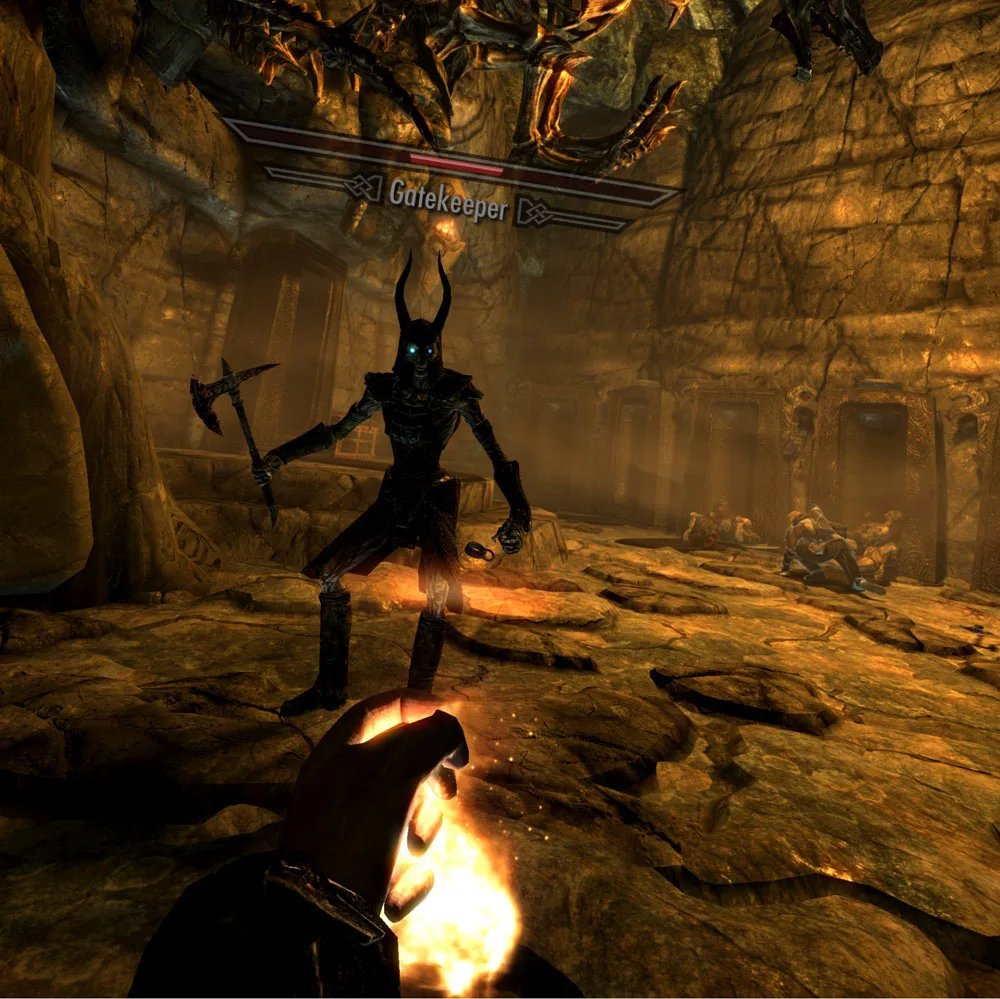
We benchmarked Skyrim VR using its highest settings, and we also increased the resolution to its in-game maximum. Here are the frametime results.
Here are the details of our comparative runs as reported by FCAT-VR.
The RTX 3080 delivered 159.68 unconstrained FPS with 4 dropped frames, 4 synthetic frames, and 4 warp misses.
The RTX 3090 delivered 186.34 unconstrained FPS with 7 dropped frames, 7 synthetic frames, and 7 warp misses. Of course, many players would prefer adding more mods to the game rather than increasing the resolution, and the RTX 3090 gives a bit more performance headroom than the RTX 3080.
Let’s check out Subnautica next.
Subnautica
Subnautica uses the Unity engine. As the sole survivor of a crash landing, the player ventures into the depths of a visually impressive alien underwater world. Here you can explore, craft equipment and build bases, pilot underwater craft, and solve mysteries all while attempting to survive a hostile environment. It is an unoptimized mess, but the VR experience is well worth it.
We benchmarked Subnautica using its highest settings plus TAA, but we left its resolution at 100%, and here are the frametime results.
Here are the details.
The RTX 3080 delivered 100.82 unconstrained FPS with 4 dropped frames, 4 warp misses, and 31% (1958) of its frames had to be synthesized.
The RTX 3090 delivered 116.01 unconstrained FPS with 4 Warp Misses and 4 dropped frames, and it required 25% (1554) synthetic frames. The experience playing Subnautica using its highest settings is not ideal as it doesn’t appear to be very well optimized and there are obvious stutters at times which may also be driver related.
Next up, The Vanishing of Ethan Carter.
The Vanishing of Ethan Carter
The Vanishing of Ethan Carter is an older game which is built on the Unreal 4 engine and it still boasts amazing visuals although it is not demanding. Although it is considered by some to be a walking simulator, it is also an excellent detective game with great puzzles. But be aware that its style of locomotion tends to make some of its players VR sick.
There are just a few in-game graphics options available, so we set 130% resolution in-game with TAA and then set SteamVR’s resolution to 160%. Here is the frametime plot.
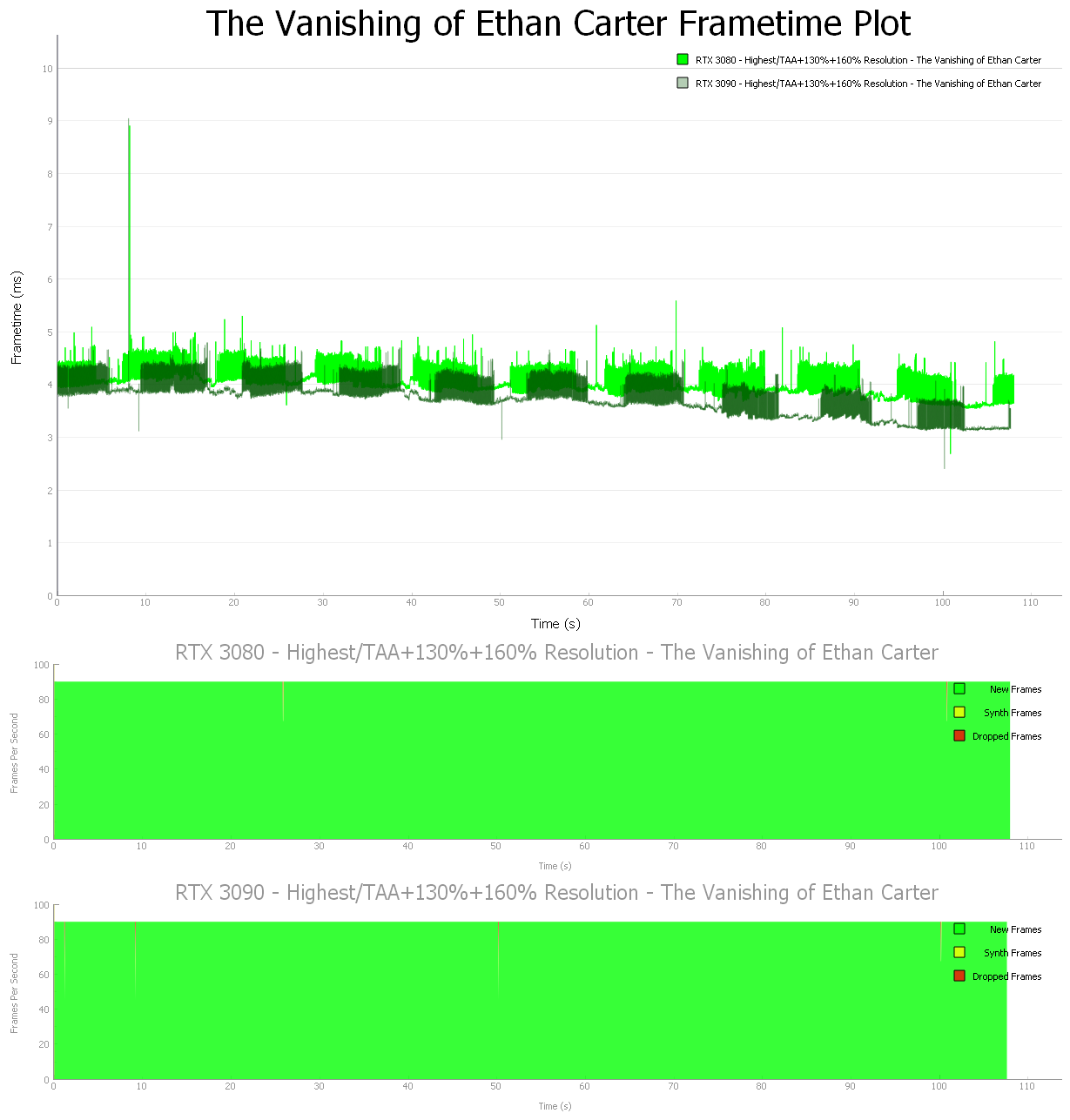
Here are the FCAT-VR details.
The RTX 3080 delivered 247.71 unconstrained FPS with 2 dropped frames, 2 warp misses and 2 synthetic frames.
The RTX 3090 delivered 267.88 unconstrained FPS with 4 dropped frames, 4 warp misses, and 4 synthetic frames.
Although it is a beautiful game visually, The Vanishing of Ethan Carter isn’t particularly demanding even after the Super Resolution is increased to 130% in-game, and then even further by increasing the Resolution in SteamVR to 160%. However, there may be a conflict between increasing the SteamVR resolution with the in-game resolution increase, so perhaps an player may wish to experiment with the settings. There were more warp misses than what is usual.
Last up, The Walking Dead: Saints & Sinners.
The Walking Dead: Saints & Sinners
The Walking Dead: Saints & Sinner is the last of BTR’s 13 VR game benching suite. It is a first person survival horror adventure RPG with a strong emphasis on crafting. Its visuals using the Unreal 4 engine are outstanding and it makes good use of physics for interactions.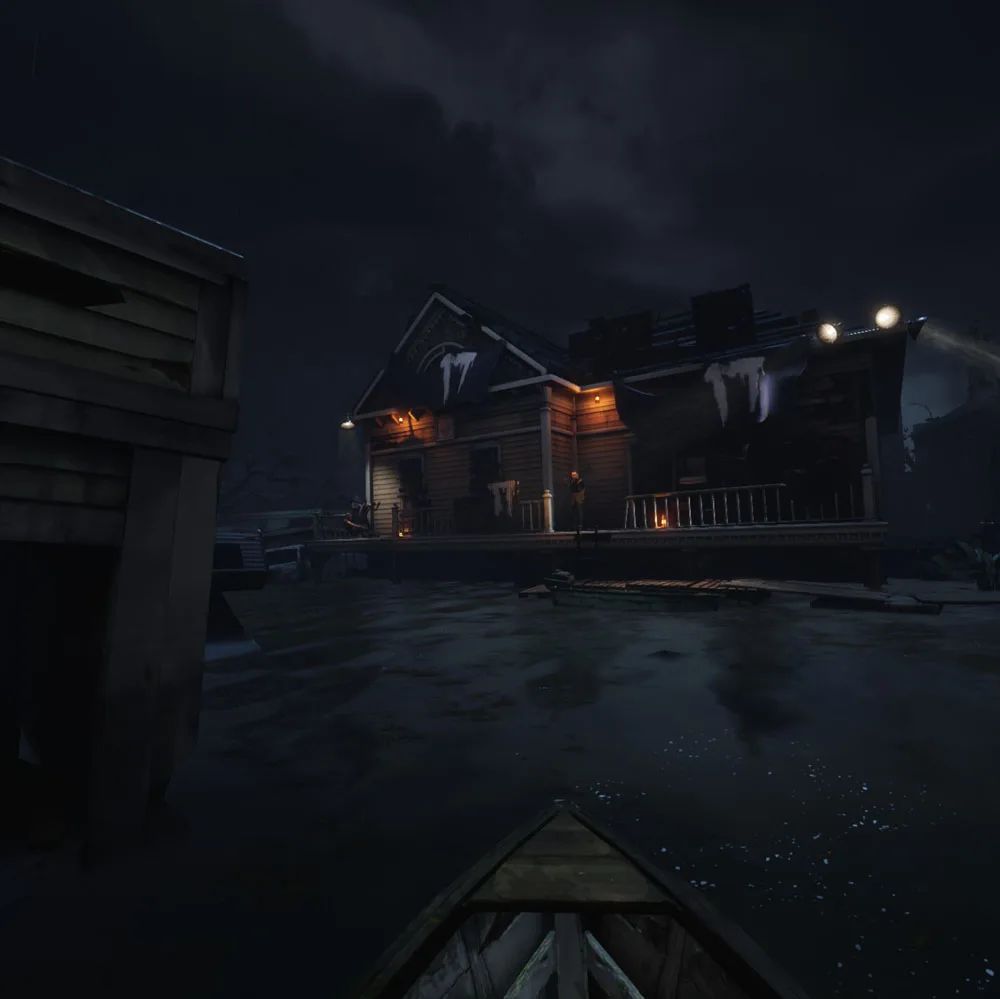
We benchmarked Saints and Sinners using its highest settings, but this time we increased the Pixel Density to 150% in game. 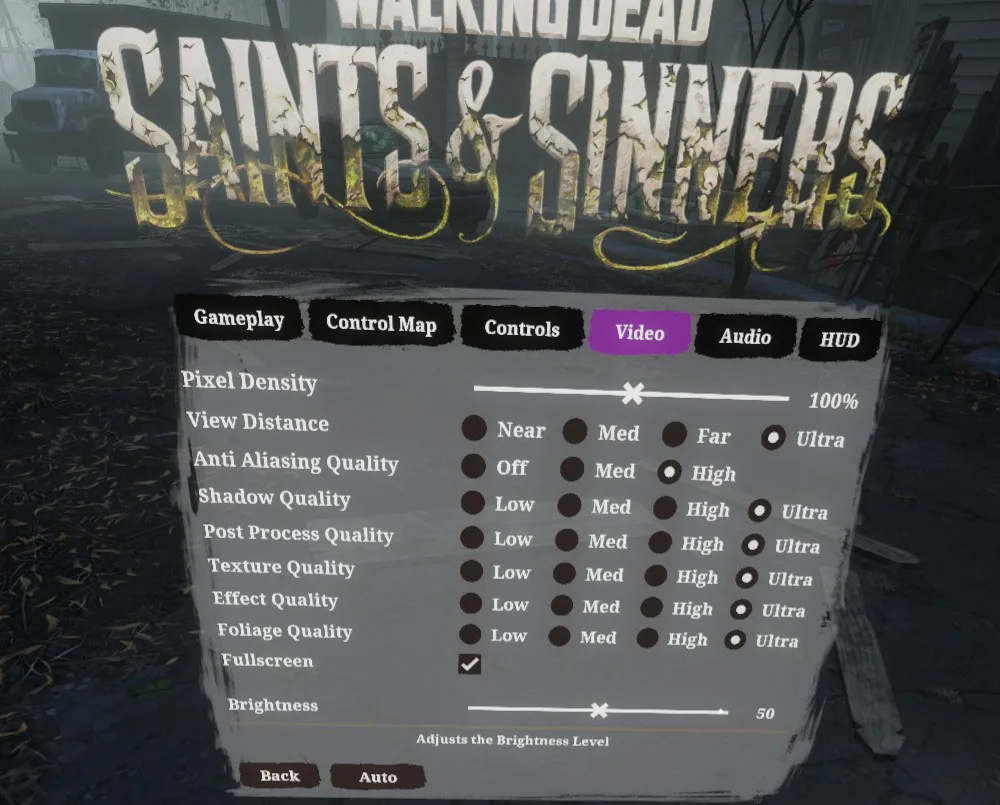 Here is the frametime chart.
Here is the frametime chart.
Here are the details as reported by FCAT-VR.
The RTX 3080 delivered 121.60 unconstrained FPS with 7 dropped frames and 7 warp misses, and 15 of its frames had to be synthesized.
The RTX 3090 delivered 143.38 unconstrained FPS with 1 dropped frames and 1 Warp Miss, and it required 1 synthetic frame. The experience playing The Walking Dead: Saints & Sinners using the in-game maximum settings and highest Pixel Density is similar between both video cards although the RTX 3090 has more performance headroom.
Let’s look at our overall Unconstrained Framerates Chart.
Unconstrained Framerates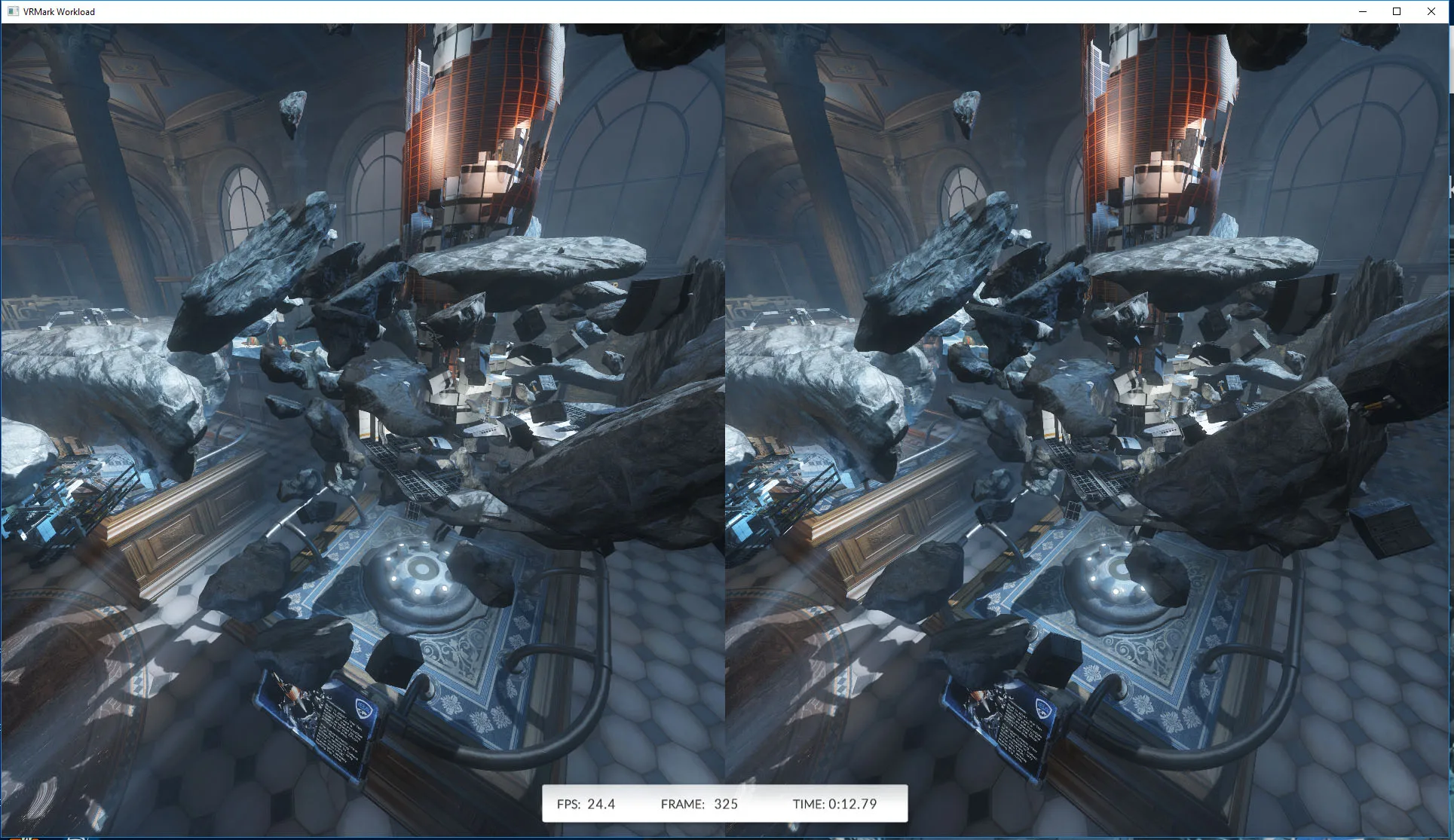
The following chart summarizes the overall Unconstrained Framerates (the performance headroom) of our two cards using thirteen test games and four synthetic benches: Superposition, VRMark’s Cyan and Blue Rooms, and the OpenVR benchmark. Higher is better.
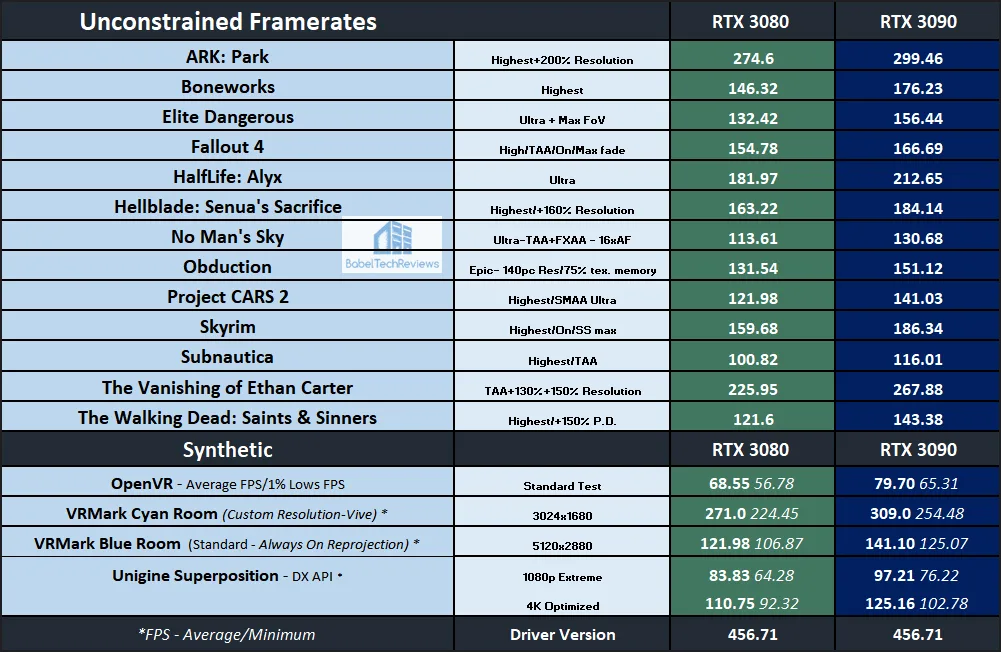
Synthetic benchmarks are only useful for ranking cards. They don’t predict how any game will actually play in VR on any particular video card. We don’t give percentages of change or percentages of increase between competing cards since unconstrained framerates are just one metric of performance headroom that is useless without the accompanying frametime charts.
Let’s check out our conclusion.
Conclusion
As we concluded from the launch review of the RTX 3090 after we exhaustively benchmarked it with 35 pancake games including 8K and ray traced; tested it with workstation and pro apps, and overclocked it, and we will say the same thing about its VR performance:
“The RTX 3090 at $1499 is the upgrade from the $1199 RTX 2080 Ti since the RTX 3080 gives about 20-25% improvement. If a gaming enthusiast wants the very fastest card – just as the RTX 2080 Ti was for the past two years, and doesn’t mind the $300 price increase – then it is the only choice for gaming … It stands alone as the fastest video card in the world.”
The RTX 3090 also gives more of a performance uplift in VR over the Turing RTX 2080 Ti than for regular pancake gaming. However, the RTX 3090 is a halo GeForce gaming card that is very expensive, and it is nowhere close to double the performance for more than double its price over the $699 RTX 3080. The RTX 3090 is primarily for bragging rights, and for those enthusiasts who want the very best video card available – for those who don’t mind paying $1500 for it.
For VR gamers that use Turing or Ampere GeForce video cards, an excellent option to improve the visuals of a game without impacting performance is by using NVIDIA’s VRSS which is implemented at the driver level for DX11 Forward Rendered MSAA-enabled games. It is found in NVIDIA’s control panel. So far, over 30 games are supported including Boneworks and The Walking Dead: Saints & Sinners
We will follow up this review by comparing the performance of the RTX 3090 with 2 x RTX 2080 Ti’s in SLI using the RTX TITAN’s high bandwidth NVLink Bridge. We will test mGPU, what is now legacy SLI, and we’ll also benchmark pro apps to see if it can take advantage of 2 x 2080Ti’s 22GB of pooled memory versus the RTX 3090’s 24GB vRAM.
We have also welcomed a new VR reviewer, Sean. He is a racing and flight sim specialist who also will join us in benching VR for this large and growing community. His first review is expected this week.
Afterward, we will follow up on our Vive Pro Wireless Adapter review to compare performance using an overclocked i7-8700K versus an i9-10900K. We love the freedom of being untethered by a cable to our PC! And we will also review the ASUS Chakram mouse shortly before we prepare for the arrival of the RTX 3070. Plus we have another big surprise in store for our readers.
Stay tuned to BTR!
Happy VR Gaming!
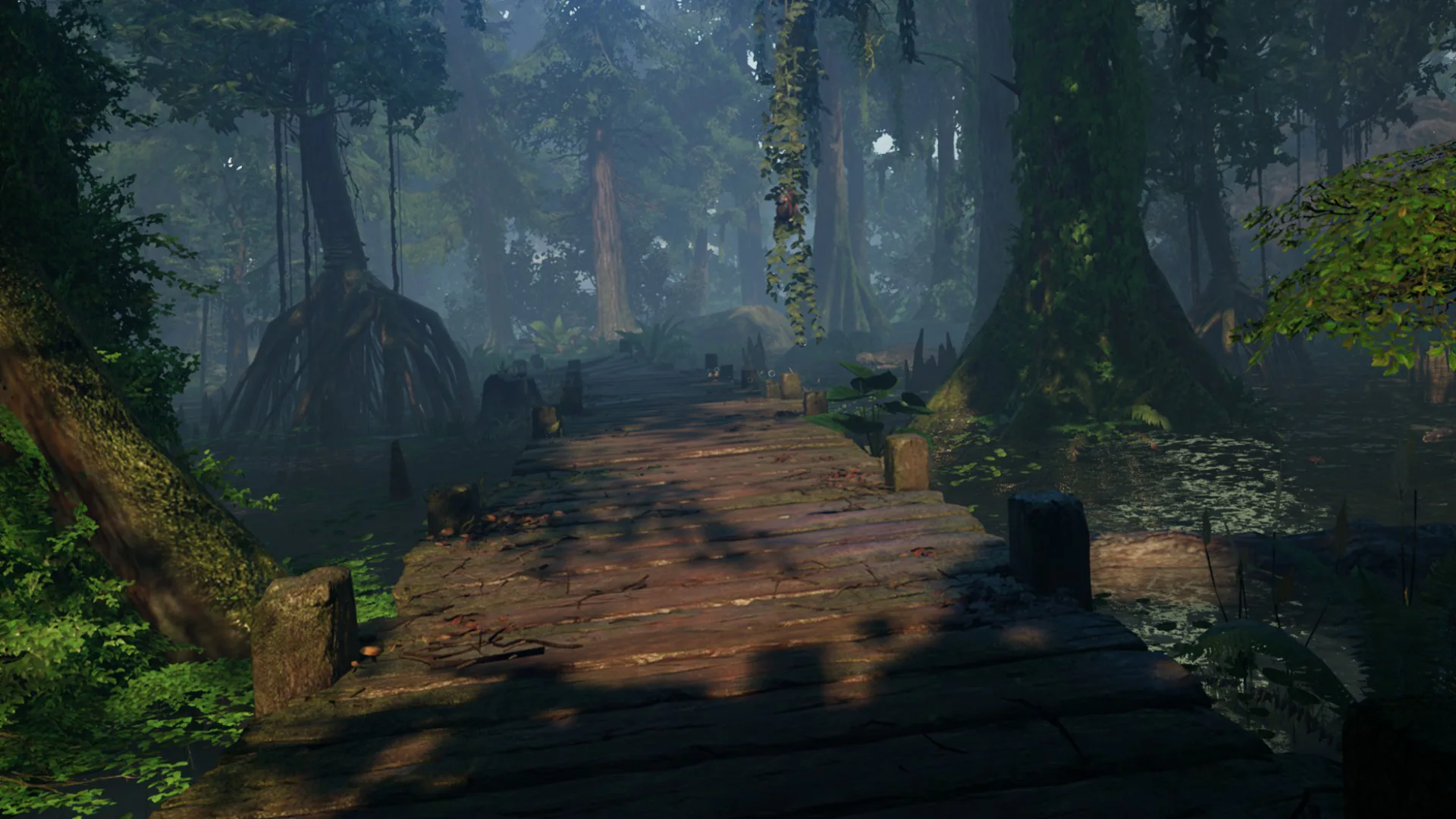
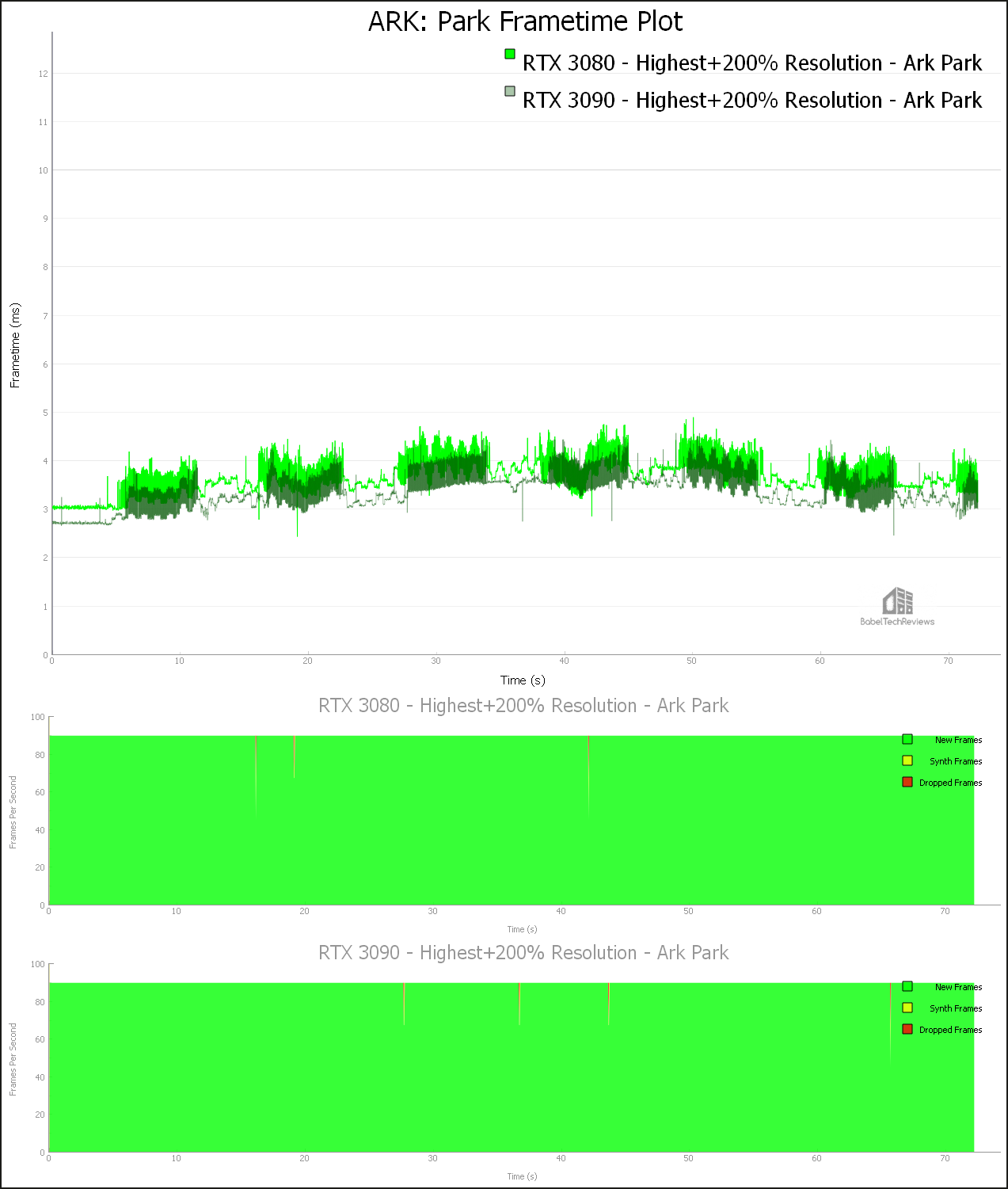

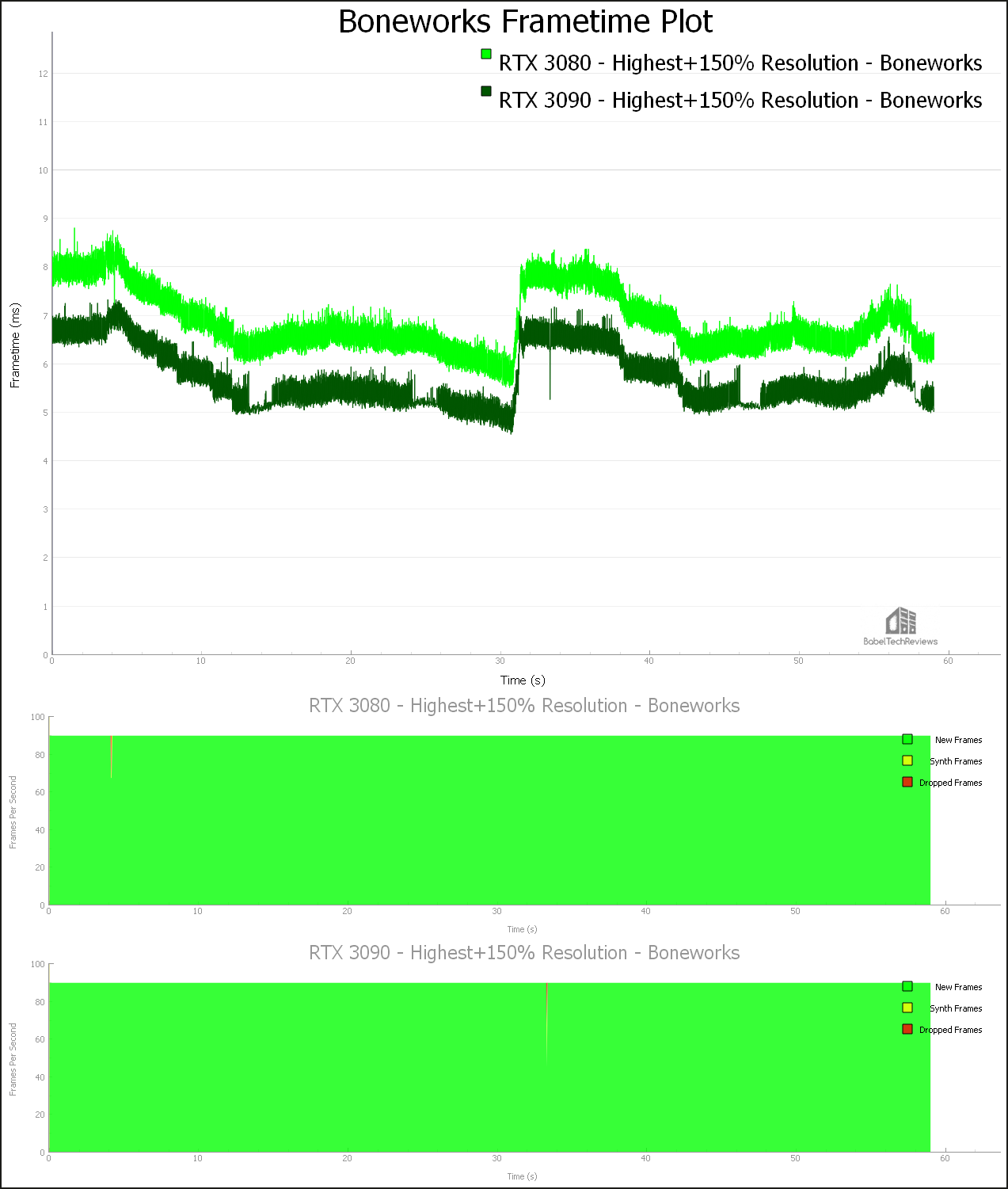


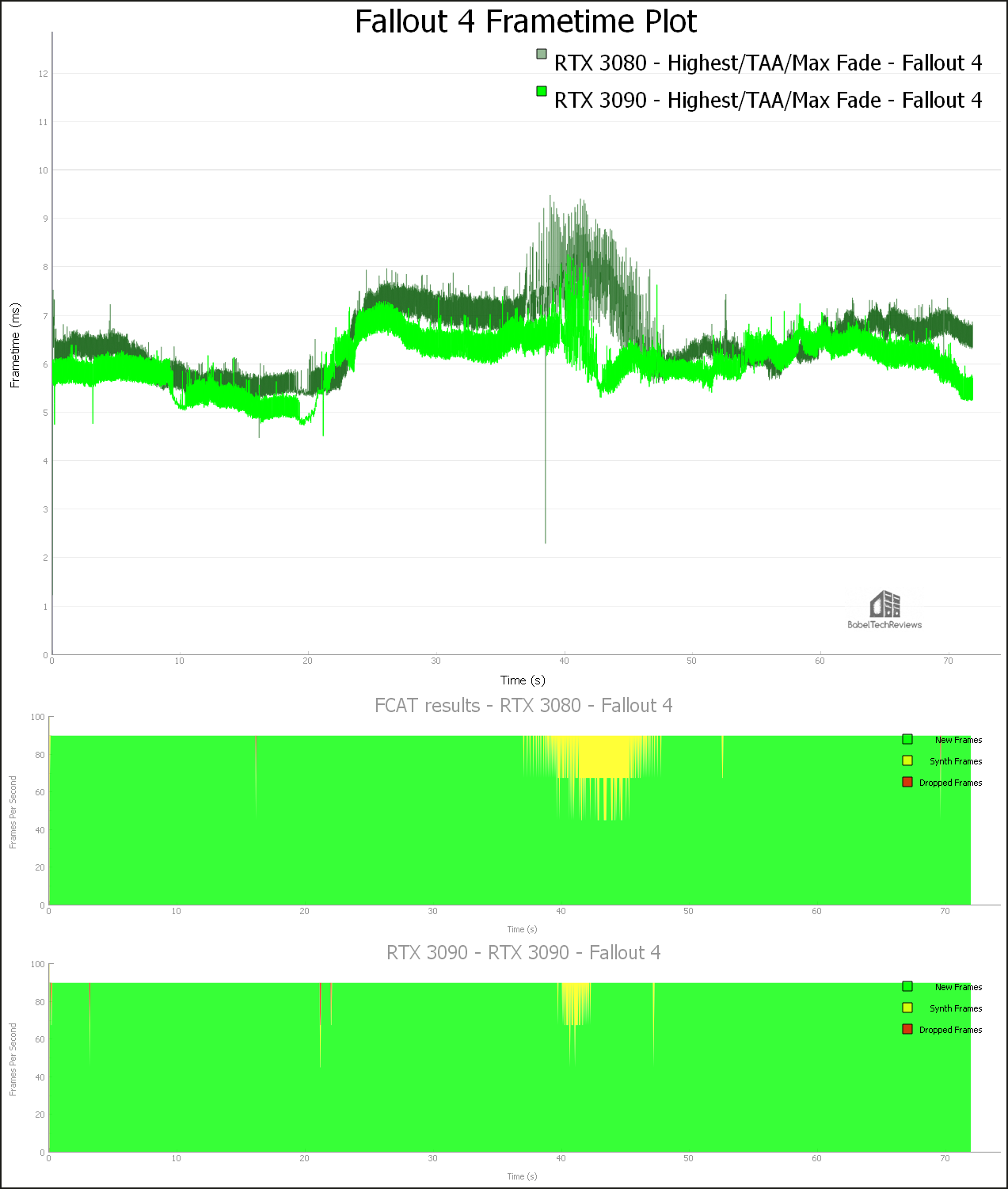

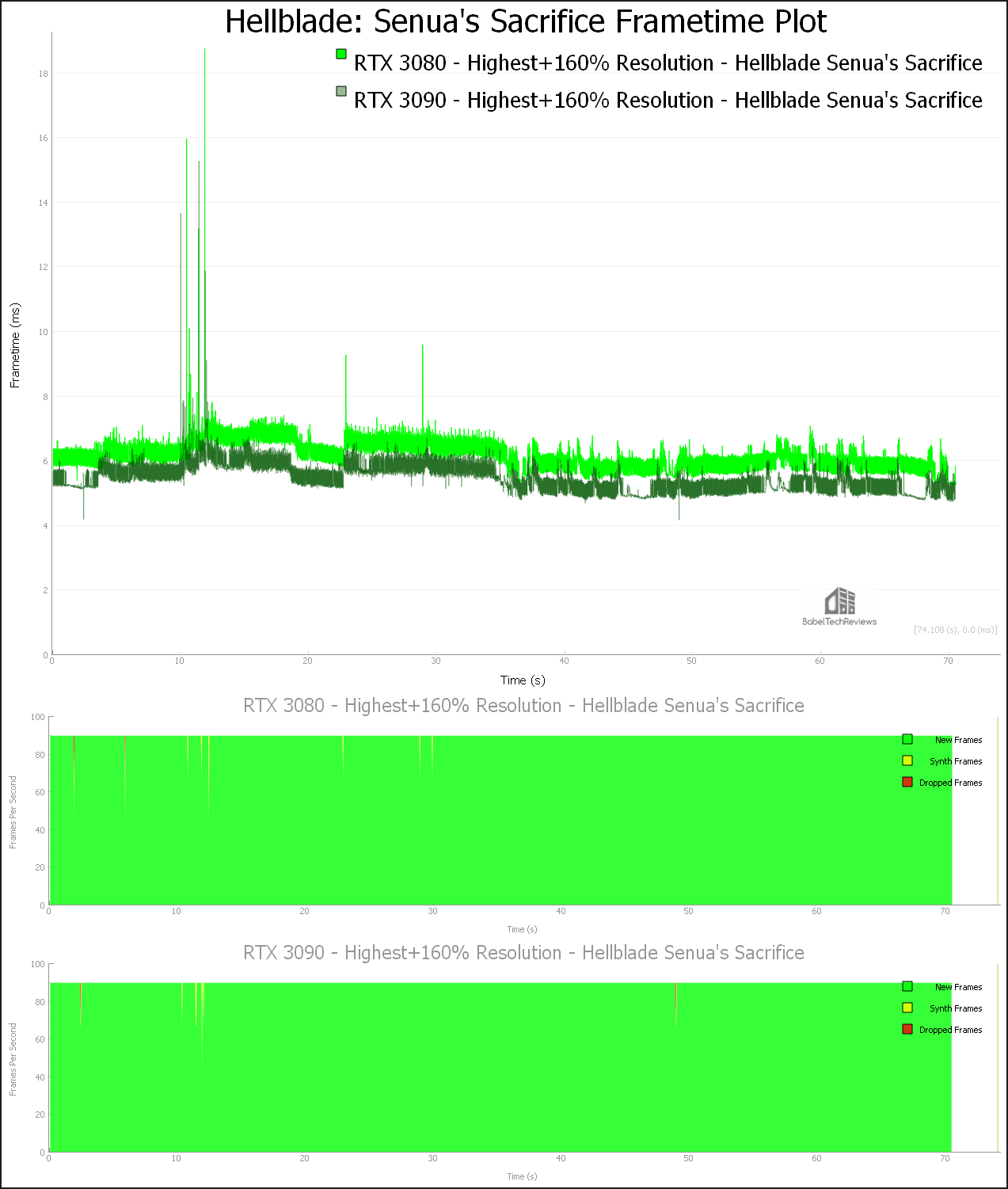


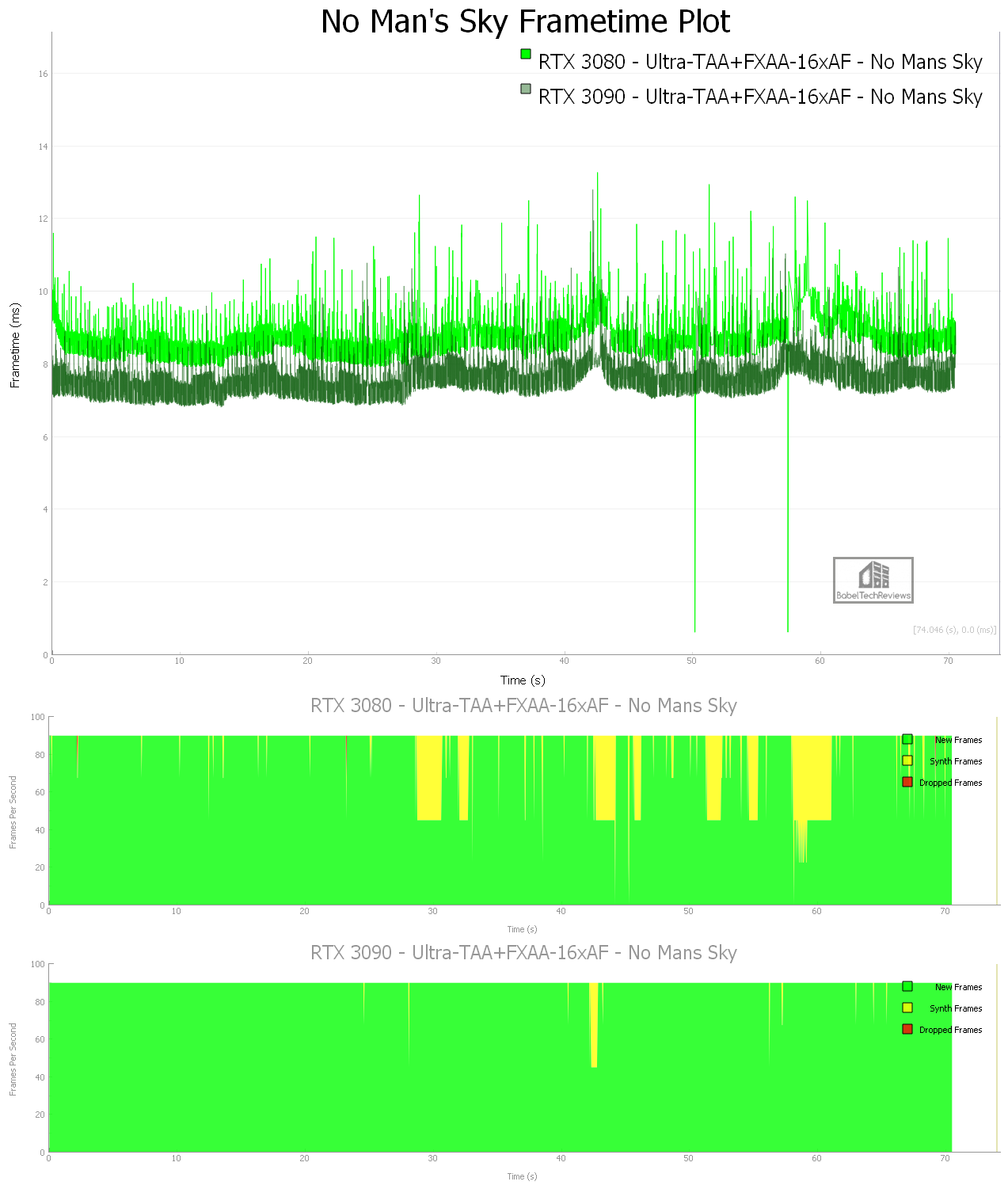

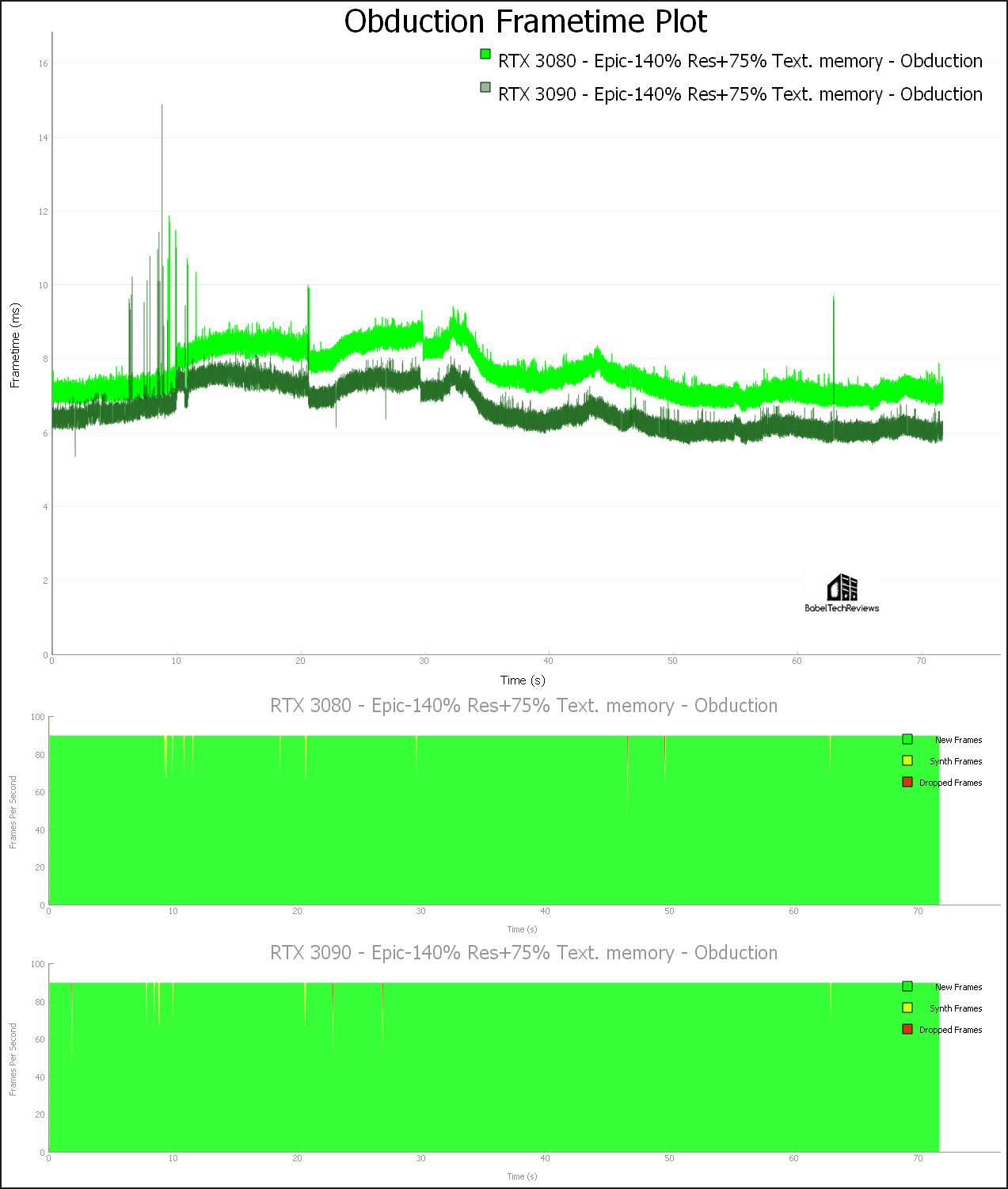


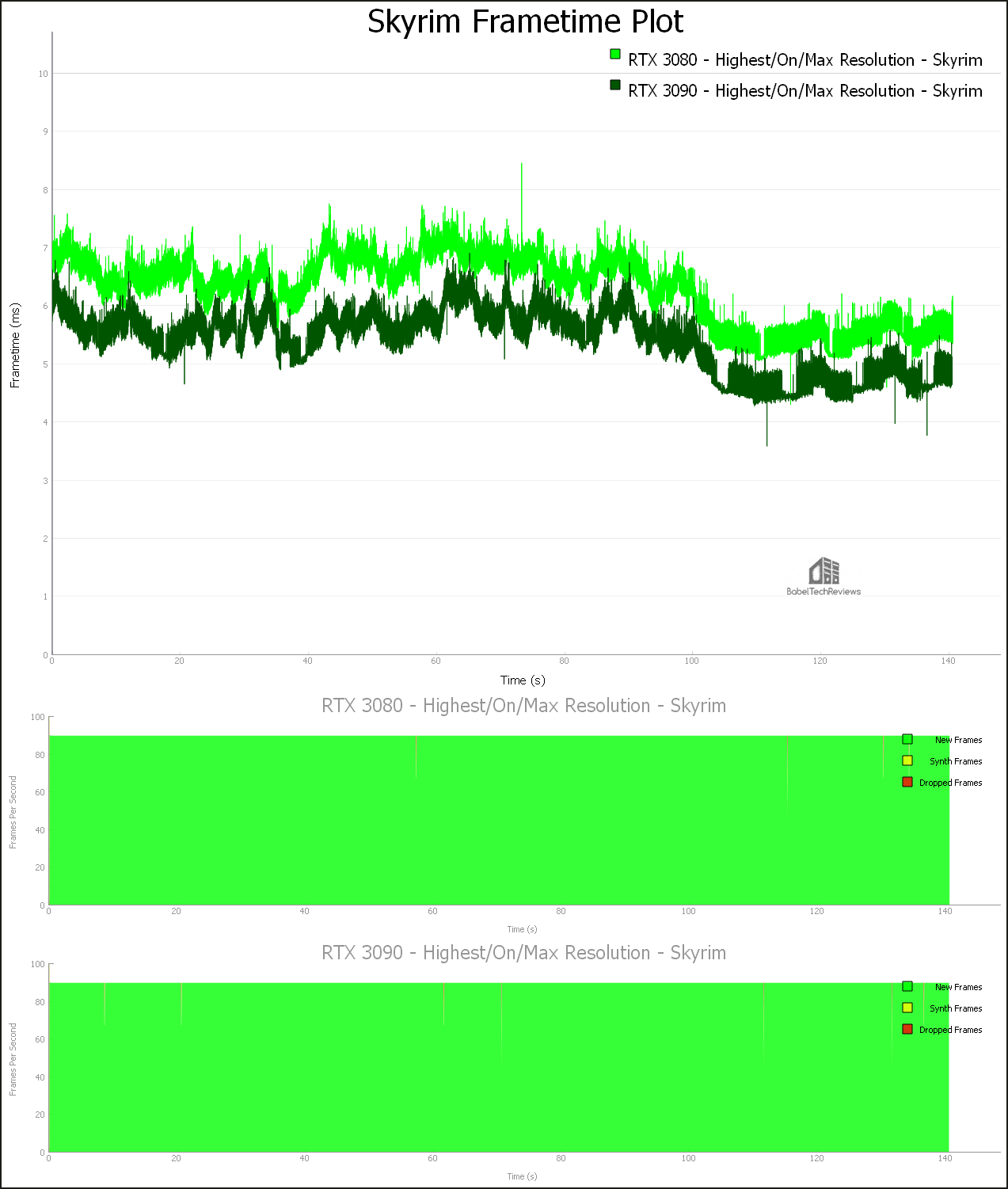



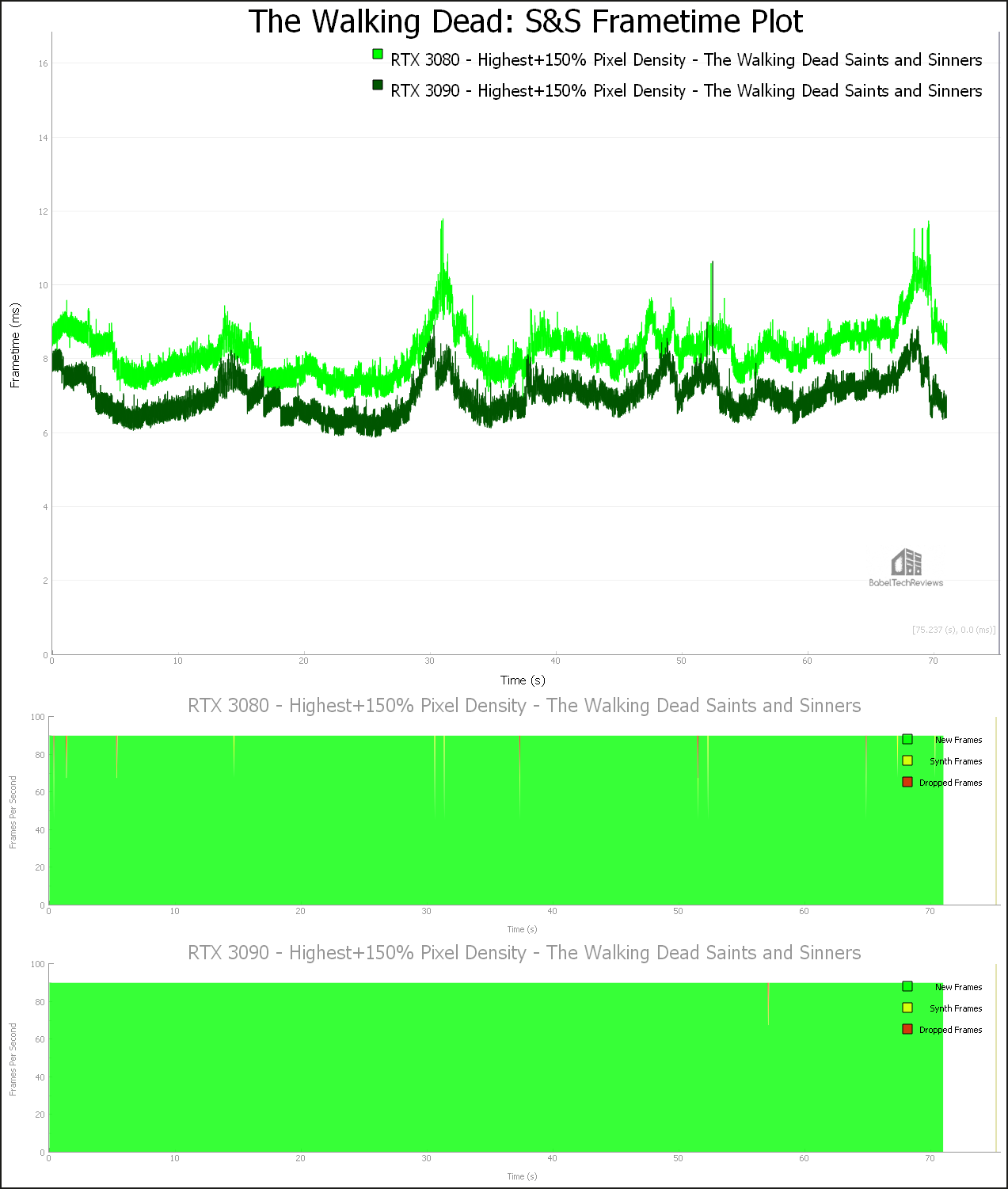

Comments are closed.